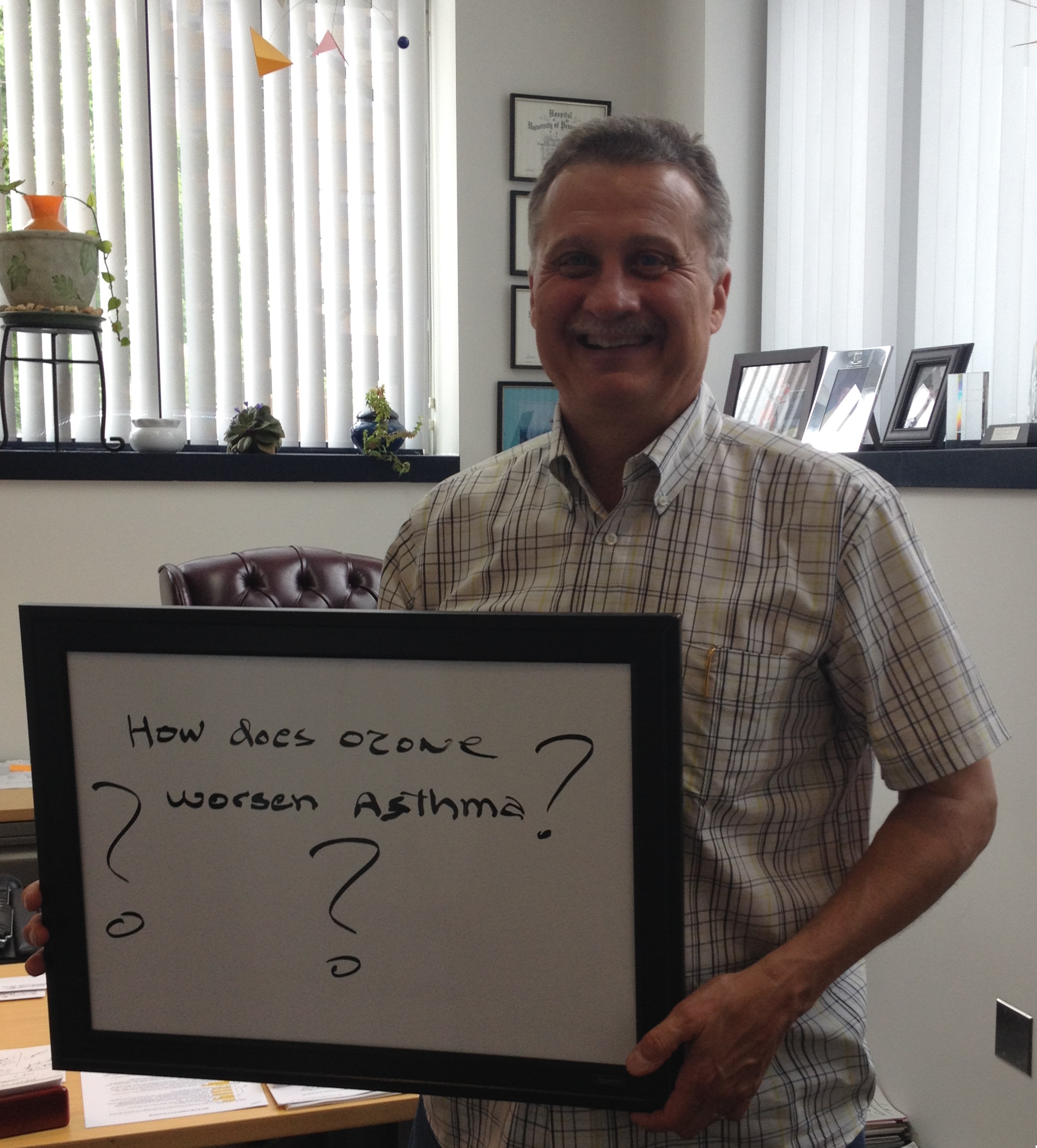Responsible Conduct of Research Discussion with Dr. Jeff Field & Rich Pepino.
This lectureship series is for STEER and TREES students.
Responsible Conduct of Research Discussion with Dr. Jeff Field & Rich Pepino.
This lectureship series is for STEER and TREES students.

Asthma has great significance for us in Philadelphia because we have some of the highest rates of asthma in the country (26% in some neighborhoods). We know some of the environmental challenges that contribute to these high rates of asthma. The Philadelphia region has more air pollution than many other places. Philadelphia does not attain the National Ambient Air Quality Standards for particulates and ozone. That means that we have days that have unhealthy levels of particulates and ozone. Particulates can irritate airways and sometimes particulates act as the vehicles to transport other chemicals deep into our lungs. At the Center of Excellence in Environmental Toxicology, we are doing research to help understand the ways that particulates and ozone affect health. Our goal is to reduce asthma and other health effects of air pollution.
The biggest sources of particulates in Philadelphia are transportation sources. These include cars, diesel trucks, buses, trains and planes. We all breathe the air but some people live, work or go to school in places where there are more sources of air pollution. Those who live near major roads or wait for the school bus can have larger exposures. Exercising outside on days when the ozone or particulate level in the air is high increases your exposure because you breathe more.
All you need is a smart phone and the information will come to you. Visit www.enviroflash.info and sign up. You will receive information about the air quality in the Philadelphia region every day. You can use this information to plan your exercise and to be aware of days when air pollution can have an impact on your health.
If you would like to learn more about what we are doing at the University of Pennsylvania, please feel free to explore our website!
The easiest way to stay involved is to follow the COEC at CEET on Twitter and Like Us on Facebook. We will post regular updates on events all around Philadelphia.
Also, feel free to download and distribute the Eight Tips to Help Your Child’s Asthma brochure created by the Pediatric Asthma Task Force of Delaware County (PATF) and the Community Outreach and Engagement Core at the Center of Excellence in Environmental Toxicology!
Our laboratories are consistently recruiting research subjects for a number of important studies in asthma and COPD. Visit the website http://www.med.upenn.edu/airways/, for more information.
Please share with us any questions you have regarding asthma or any other environmental health issues by using the comment field, contact us, Twitter or Facebook!
Have a suggestion for a topic to be covered in our blog? Let us know! We would love to cover a topic that you are interested in learning more about!
Follow #IamEH for all of our posts and learn about what environmental health questions are being asked all over the country!

We are going to highlight the Integrative Health Sciences Facility Core (IHSFC) and the Lung and Airway Disease Affinity Group and its work on asthma with Dr. Reynold Panettieri
The Integrative Health Sciences Facility Core (IHSFC) focuses on identifying important research questions that can directly address human disease.
In the Lung and Airway Disease Affinity Group, we focus on understanding the cause of asthma and COPD with a focus on new therapeutic agents. Our research at the Lung and Airway Disease Affinity Group and IHSFC is unique. We are one of seven centers nationwide that have a human exposure chamber to directly test hypotheses related to human health. Additionally, we have new experimental platforms using human cells that greatly enhance the relevance of our work. Our laboratory has been active for the past 22 years and has specifically focused on novel therapeutics in the treatment of COPD and asthma. Although we have a legacy of research in this area, our focus is always on using up-to-date, state-of-the-art approaches to address problems.
We help children and adults who have or are affected by asthma. Asthma rates in Philadelphia are some of the highest in the country. In some neighborhoods, asthma rates are as high as 26%!
Our recent evidence suggests that vitamin D is a critical therapeutic that can improve airway obstruction and inflammation seen in asthma and COPD. We are optimistic that the development of vitamin D inhaled solutions may greatly impact human health.
Our laboratories are consistently recruiting research subjects for a number of important studies in asthma and COPD. Visit our website (http://www.med.upenn.edu/airways/), to learn more about opportunities to participate in our research.
Follow #IamEH for all of our posts and learn about what environmental health questions are being asked all over the country!
